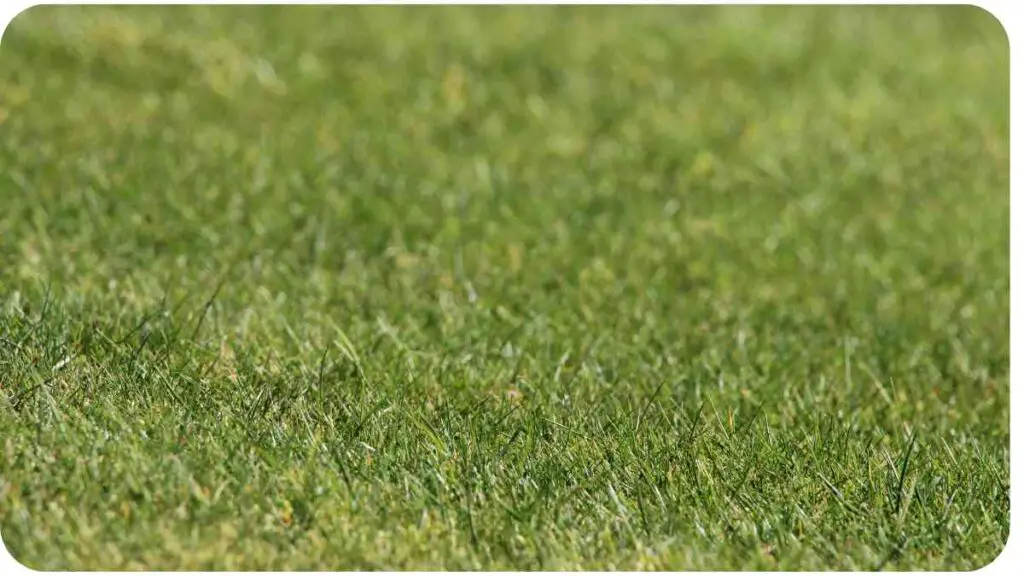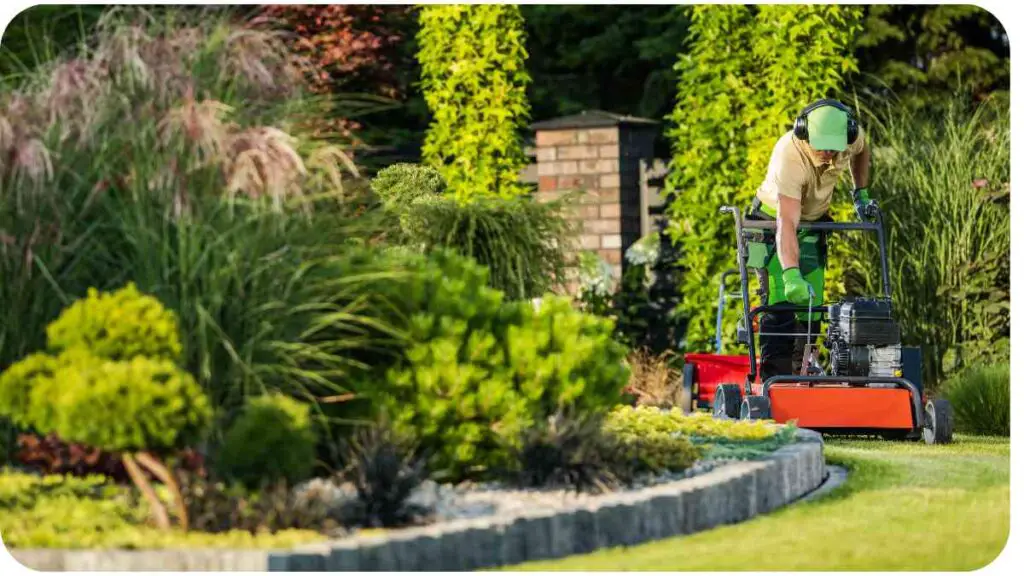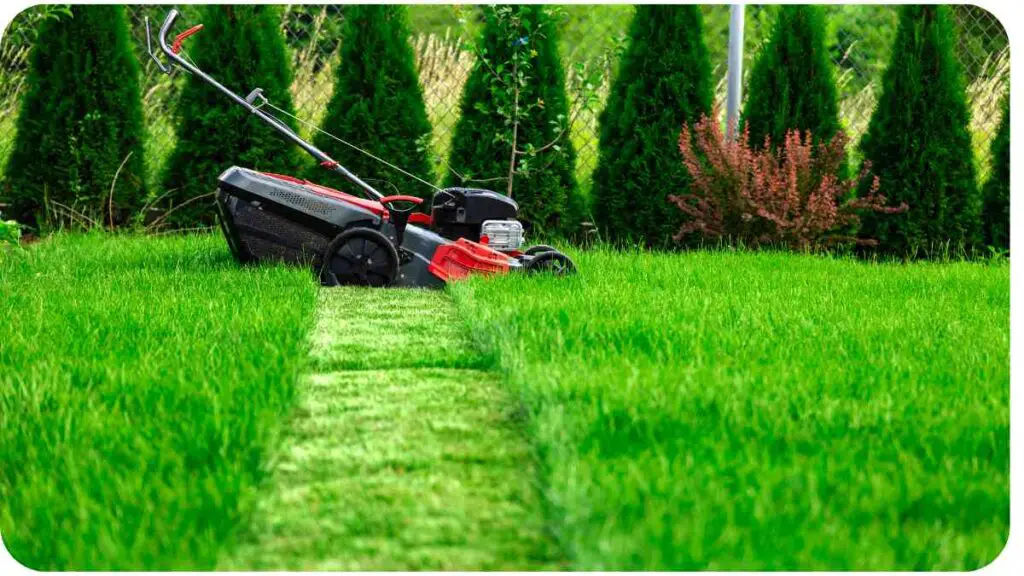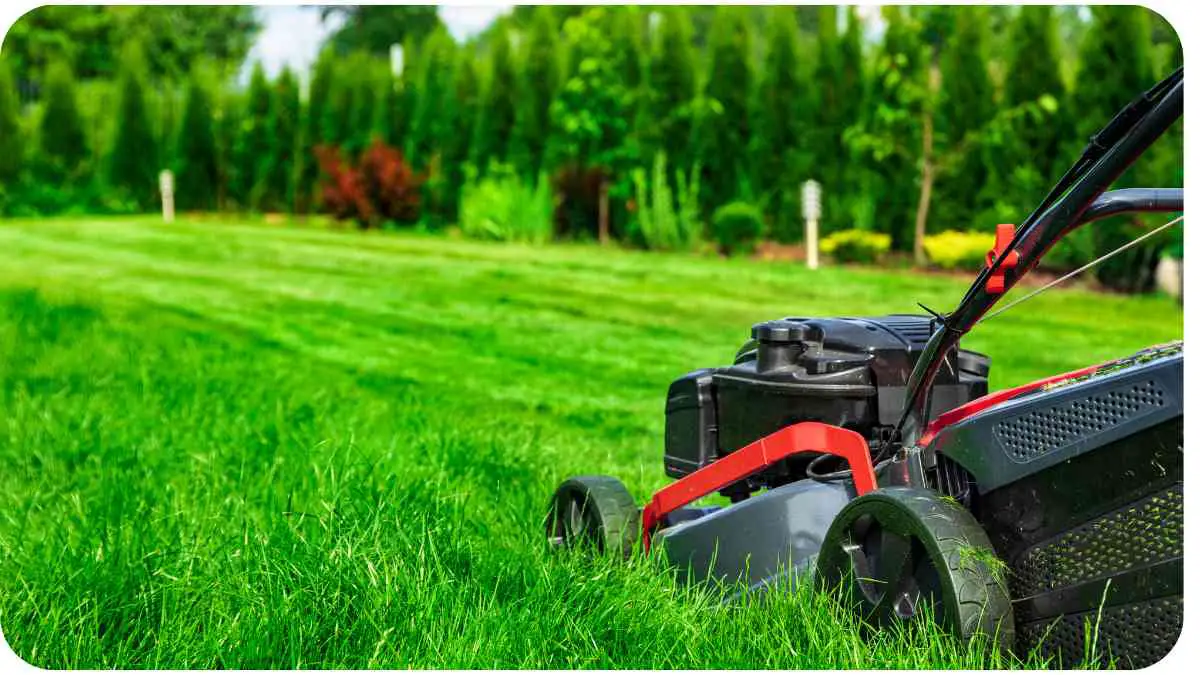Lawn thatch can be a tricky issue for homeowners striving for that perfect green carpet. You’ve probably heard of it but might not fully understand what it is or why it’s such a big deal.
In this article, we’ll dive into what lawn thatch is, why it builds up, how to manage it, and the best practices for keeping your lawn healthy. Think of this as your comprehensive guide to achieving a lush, vibrant lawn without the hassle of excessive thatch build-up.
| Takeaway |
|---|
| Understanding lawn thatch is essential for maintaining a healthy and attractive lawn. |
| Thatch is a layer of organic matter between the soil and grass, and while it can be beneficial in small amounts, excessive build-up can harm your lawn. |
| Common causes of thatch build-up include over-fertilization, improper watering, inadequate mowing, and soil compaction. |
| Signs of excessive thatch include a spongy lawn, poor water and nutrient absorption, and uneven growth. |
| Effective methods for managing thatch include manual removal, mechanical dethatching, and core aeration. |
| To prevent future thatch build-up, follow proper fertilization, watering, and mowing practices. |
| Seek professional help if thatch problems persist despite your best efforts or if the issue affects a large area. |
| Regular maintenance and attention to lawn care details can help you achieve and maintain a vibrant, healthy lawn. |
What is Lawn Thatch?

Definition
Lawn thatch is a layer of organic matter that accumulates between the soil and the grass. It’s primarily made up of dead grass roots, stems, and other plant material. This layer, when kept under control, can actually benefit your lawn by helping it retain moisture and nutrients. However, when it builds up too much, it can become a problem.
Lawn care doesn’t have to be complicated, especially when following expert tips. Discover practical advice and strategies by visiting essential tips for a beautiful lawn all year round. Proper lawn maintenance can ensure your grass stays lush and green while preventing issues like thatch build-up.
Components of Thatch
| Component | Description |
|---|---|
| Dead Grass Roots | Dead roots from the grass that don’t decompose quickly. |
| Grass Stems | Old stems from the grass blades that accumulate. |
| Organic Debris | Leaves and other plant material that contribute to thatch. |
Causes of Lawn Thatch Build-Up
Over-Fertilization
Fertilizer is essential for a healthy lawn, but too much of it can lead to excessive thatch. When you apply more fertilizer than needed, the grass grows too quickly, leading to a build-up of organic material that forms the thatch layer.
Improper Watering
Watering your lawn too frequently or too infrequently can also contribute to thatch problems. Over-watering can lead to shallow root growth, while under-watering stresses the grass and slows down decomposition of organic matter.
Inadequate Mowing
Mowing your lawn irregularly or not cutting it at the right height can exacerbate thatch build-up. Taller grass can contribute to more thatch, while cutting it too short can stress the lawn and contribute to thatch problems.
Maintaining a pristine lawn requires regular attention. You can explore the ultimate guide to lawn maintenance to keep your lawn healthy. It offers practical advice, ensuring you can effectively address common problems, such as lawn thatch build-up, and maintain an immaculate landscape.
Soil Compaction
Compacted soil restricts root growth and reduces the ability of microorganisms to break down thatch. This can lead to a build-up of organic material on the soil surface.
Signs of Thatch Build-Up
Visual Indicators
You might notice a layer of spongy material on top of the soil, which is a tell-tale sign of thatch. Other visual indicators include a lawn that looks uneven or doesn’t respond well to fertilization and watering.
Impact on Grass Health
Thatch build-up can lead to poor grass health. It restricts water and nutrient absorption, making your lawn more susceptible to diseases and pests.
Many homeowners unknowingly make common lawn care mistakes. Learn the top 15 lawn care mistakes and how to avoid them, especially regarding lawn thatch. Fixing these mistakes early can greatly improve your lawn’s overall health and appearance.
Measuring Thatch Thickness

Simple Methods
You can measure thatch thickness with a simple DIY test. Use a shovel to cut out a small section of your lawn, and then measure the layer of thatch between the soil and the grass.
Using Professional Tools
For a more accurate measurement, you can use a thatch gauge. This tool helps professionals determine the thickness of the thatch layer and whether it requires attention.
Thatch Management Strategies
Manual Removal
Manual removal of thatch involves using a rake or other hand tools to physically pull out the thatch. This method is labor-intensive but effective for smaller areas.
Mechanical Dethatching
Mechanical dethatching uses specialized equipment to remove thatch. This method is suitable for larger areas and can be rented or purchased from lawn care equipment suppliers.
Core Aeration
Core aeration involves removing small plugs of soil from your lawn, which helps alleviate compaction and allows for better decomposition of thatch. This process can also improve root growth and nutrient absorption.
Many homeowners unknowingly make common lawn care mistakes. Learn the top 15 lawn care mistakes and how to avoid them, especially regarding lawn thatch. Fixing these mistakes early can greatly improve your lawn’s overall health and appearance.
Preventing Future Thatch Build-Up
Proper Fertilization
To avoid over-fertilization, follow a recommended fertilization schedule based on your lawn type and soil conditions. Use slow-release fertilizers to provide a steady supply of nutrients.
Correct Watering Practices
Water your lawn deeply but infrequently to encourage deep root growth. Avoid watering during the hottest part of the day to reduce evaporation.
Effective Mowing Techniques
Mow your lawn regularly and keep your mower blades sharp. Adjust the cutting height according to the season and grass type to avoid stressing the lawn.
When to Seek Professional Help
Signs You Need an Expert
If you’ve tried various methods and your lawn still suffers from thatch build-up, it might be time to call in a professional. Signs include persistent thatch despite your best efforts, or if the problem affects a large area.
Dealing with uneven lawn growth can be tricky, but it often stems from underlying issues like thatch accumulation. If you want to troubleshoot these issues, read about troubleshooting uneven lawn growth. It offers solutions to keep your lawn looking its best.
Choosing a Lawn Care Professional

Look for a professional with experience in dealing with thatch and a good reputation in your area. Ask for references and check their credentials before hiring.
Case Studies and Real-World Examples
Residential Lawn Success Stories
Many homeowners have successfully managed thatch build-up by implementing a combination of manual removal and core aeration. For example, the Smith family in Dallas saw significant improvement after following a tailored lawn care plan.
Commercial Lawn Solutions
Commercial properties often face unique challenges with lawn care. For instance, a golf course in Florida improved its turf health by incorporating regular mechanical dethatching and precise fertilization schedules.
Bermuda grass invasions can choke healthy lawns and aggravate problems like thatch. Learning how to battle Bermuda grass invasions in your lawn is essential for proper lawn care. This guide will help you address invasive species while maintaining a thriving lawn.
Frequently Asked Questions (FAQs)
- What is the best way to remove thatch from my lawn?
- Mechanical dethatching is often the most effective for large areas, while manual removal can be sufficient for smaller lawns.
- How often should I aerate my lawn?
- Most lawns benefit from core aeration once a year, but high-traffic areas may need it more frequently.
- Can thatch build-up be prevented?
- Yes, by following proper fertilization, watering, and mowing practices, you can minimize the risk of excessive thatch build-up.
- What type of fertilizer is best for preventing thatch?
- Slow-release fertilizers are recommended to prevent over-fertilization and reduce thatch accumulation.
- How can I tell if my lawn has too much thatch?
- If your lawn feels spongy or if water and nutrients are not penetrating the soil, you might have excessive thatch.
Conclusion
Understanding and managing lawn thatch is crucial for maintaining a healthy, attractive lawn. By identifying the causes of thatch build-up and employing effective management strategies, you can ensure your lawn remains lush and vibrant. Regular maintenance and attention to detail are key to preventing thatch issues and enjoying a beautiful lawn year-round.
Further Reading
Everything You Need to Know About Lawn Thatch
This comprehensive guide from Joe’s Lawn Care covers the essentials of lawn thatch, including its causes, effects, and management strategies. It’s a great starting point for anyone new to the topic.
Managing Thatch in Lawns
Provided by Penn State Extension, this resource offers detailed advice on managing thatch in various lawn types. It includes practical tips and methods for effective thatch control.
Lawn Thatch Guide
Turf World’s guide provides a thorough overview of lawn thatch, from identification to treatment. It’s a valuable resource for understanding how to maintain a healthy lawn and prevent thatch build-up.
Frequently Asked Questions (FAQs)
What is lawn thatch and why is it important?
Lawn thatch is a layer of organic material that accumulates between the soil and grass. While a small amount can be beneficial, excessive thatch can hinder water and nutrient absorption, leading to poor grass health.
How can I tell if my lawn has too much thatch?
If your lawn feels spongy underfoot, has difficulty absorbing water, or shows uneven growth, it might have excessive thatch. Measuring the thatch thickness with a shovel or a thatch gauge can confirm this.
What are some effective methods for removing thatch?
Manual removal, mechanical dethatching, and core aeration are common methods. Manual removal is suitable for small areas, while mechanical dethatching and core aeration work well for larger lawns.
How often should I perform lawn aeration to manage thatch?
Core aeration is typically recommended once a year. However, if your lawn experiences heavy foot traffic or severe compaction, more frequent aeration may be beneficial.
Can thatch build-up be prevented with proper lawn care?
Yes, proper fertilization, watering, and mowing practices can help prevent excessive thatch build-up. Using slow-release fertilizers, watering deeply, and mowing at the right height are key practices.

Hi! My name is Hellen James, and I’m a landscape designer in Los Angeles. I’ve been working with homeowners and businesses to help them improve the look of their properties for over 10 years.

